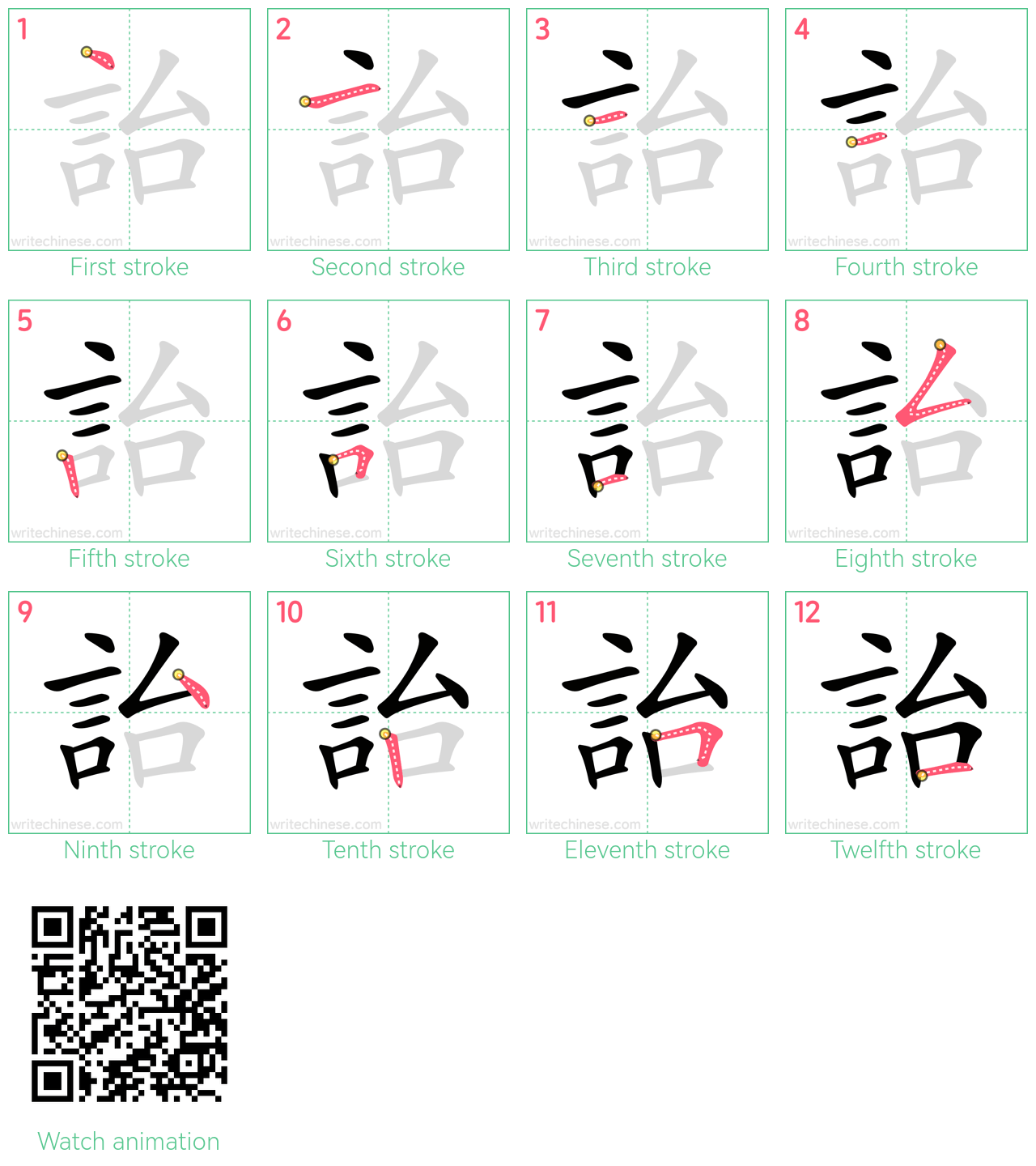How to write 詒
Animated Stroke Order of 詒
Learn to write the Chinese character "詒" by watching the stroke order animation of "詒".

Stroke by Stroke: 詒 Writing Order
Master the Chinese character '詒' stroke by stroke with visual step-by-step instructions.

Follow the Calligraphy Master: Writing '詒' Step-by-Step
Learn the proper way to write the Chinese character '詒' through a video tutorial with a calligraphy teacher. Follow the Calligraphy Master's Step-by-Step Guide to Write the Chinese Character '詒'. You can download the printable handwriting worksheets below and practice writing together with pen and paper.
Free Printable 詒 Handwriting Practice Worksheets
Meaning of 詒
Same Pronunciation Characters
Same Radical Characters
- 言
- 誉
- 誊
- 誓
- 警
- 譬
- 訇
- 訚
- 訾
- 詈
- 詹
- 謇
- 訁
- 訂
- 訃
- 計
- 訊
- 訌
- 討
- 訓
- 訕
- 訖
- 託
- 記
- 訛
- 訝
- 訟
- 訢
- 訣
- 訥
- 訪
- 設
- 許
- 訴
- 訶
- 診
- 註
- 詆
- 詐
- 詒
- 詔
- 評
- 詛
- 詞
- 詠
- 詡
- 詢
- 詣
- 試
- 詩
- 詫
- 詬
- 詭
- 詮
- 詰
- 話
- 該
- 詳
- 詼
- 詿
- 誅
- 誆
- 誇
- 誌
- 認
- 誑
- 誒
- 誕
- 誘
- 誙
- 誚
- 語
- 誠
- 誡
- 誣
- 誤
- 誦
- 誨
- 說
- 誰
- 課
- 誹
- 誼
- 誾
- 調
- 諂
- 諄
- 談
- 諉
- 請
- 諒
- 論
- 諛
- 諜
- 諠
- 諡
- 諢
- 諤
- 諦
- 諧
- 諫
- 諭
- 諮
- 諱
- 諳
- 諶
- 諷
- 諸
- 諺
- 諾
- 謀
- 謁
- 謂
- 謄
- 謅
- 謊
- 謎
- 謐
- 謔
- 謗
- 謙
- 謚
- 講
- 謝
- 謠
- 謦
- 謨
- 謫
- 謬
- 謳
- 謹
- 謾
- 證
- 譎
- 譏
- 譖
- 識
- 譙
- 譚
- 譜
- 譫
- 譭
- 譯
- 議
- 譴
- 護
- 譽
- 讀
- 變
- 讌
- 讒
- 讓
- 讕
- 讖
- 讚
- 讞
- 䜌


